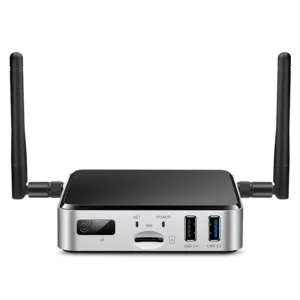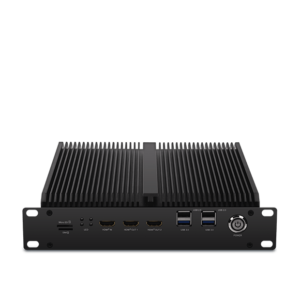A Comprehensive Manual to Deploying AI on Edge Devices
A Comprehensive Manual to Deploying AI on Edge Devices
Blog Article
A Comprehensive Manual to Deploying AI on Edge Devices
Real-World Programs of AI on Side Units
Artificial intelligence (AI) is no longer confined to the region of big, centralized information centers. As a result of improvements in engineering, edge products now play an integral role in deploying AI straight wherever data is generated. But what does AI on side units suggest, and why is it producing this type of thrill? Here, we'll examine how edge ai devices works in real life through side products and learn its wide selection of useful applications.

What is AI on Edge Devices?
AI on side devices refers to deploying artificial intelligence methods entirely on products like smartphones, cameras, drones, or IoT sensors. They do not want access to centralized servers for running knowledge; alternatively, they conduct analysis and choices domestically, creating the method quicker, better, and often more secure.
The "edge" here simply describes research done near to or at the foundation of data technology, rather than depending on the cloud. That shift is pushed by the requirements for real-time knowledge handling and the requirement to minimize latency, increase privacy, and minimize bandwidth usage.
Critical Real-World Purposes of Side AI
1. Intelligent Detective
AI-powered cameras designed with skin recognition, motion recognition, and anomaly detection are transforming surveillance systems. Side products in that domain may analyze movie streams in real-time to spot dubious actions, eliminate fake alarms, and increase public safety. For instance, AI formulas can detect strange activities and alert authorities instantly without the need to send movie knowledge to a main machine for analysis.
2. Healthcare Checking
Wearable devices and lightweight medical gear are leveraging ai m.2 module for managing wellness knowledge more efficiently. Edge-based AI in devices like wellness trackers and smartwatches displays users' vitals, such as for example heartbeat, air degrees, or body force, in real-time. These techniques analyze data domestically and give fast feedback, paving just how for quicker intervention throughout emergencies.
Beyond wearables, advanced medical imaging products designed with on-device AI may detect signs of conditions like cancer, allowing early in the day diagnoses even yet in remote parts without internet connectivity.
3. Autonomous Vehicles
Self-driving vehicles are among probably the most well-known samples of edge AI in action. With receptors, cameras, and LiDAR systems helping as information resources, AI computations take position onboard these cars to produce split-second decisions. From detecting pedestrians and obstacles to moving city streets, edge AI guarantees that the car works easily and efficiently. The real-time running convenience of edge products reduces the reliance on high-latency cloud techniques, ensuring security in life-critical scenarios.
4. Retail Analytics
Edge devices in retail settings are supporting companies analyze client behavior. Wise shelves and AI-equipped cameras may identify client choices, monitor inventory, and also modify in-store activities in actual time. The data developed from they assists retailers produce educated conclusions, improve customer satisfaction, and optimize supply management.

5. Professional IoT
Factories and professional flowers are adopting edge AI to revolutionize their monitoring and automation processes. AI-powered sensors on machinery detect possible flaws a long time before they result in costly failures. Predictive preservation driven by edge AI reduces downtime, improves productivity, and ensures safety on the production floor.
6. Personalized Experiences in Customer Units
Your smartphone is a prime exemplory case of how edge AI personalizes consumer experiences. Characteristics such as voice personnel, versatile camera controls, and on-device language interpretation use real-time AI to respond to individual wants without giving sensitive and painful information to external servers. That fosters both ease and solitude for the end user.
The Rising Affect of Side AI
The ownership of AI on side products continues to rise, driven by industries' raising demand for low-latency, real-time research, and larger information privacy. Its programs are reshaping industries ranging from healthcare and automotive to community security and retail. By placing AI's energy nearer to wherever information is generated, side devices are not only improving efficiency but also demonstrating the endless possible of invention in the present linked world. Report this page